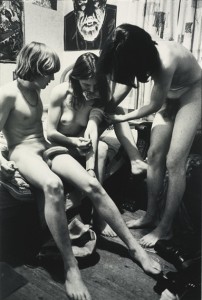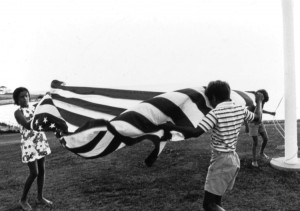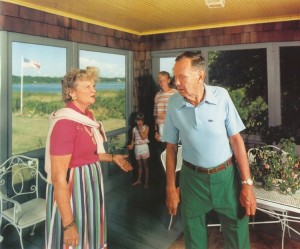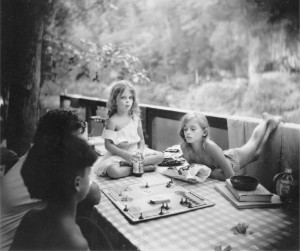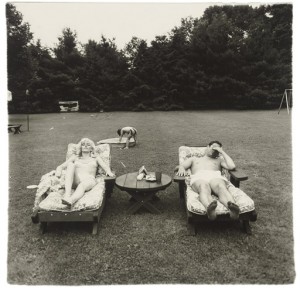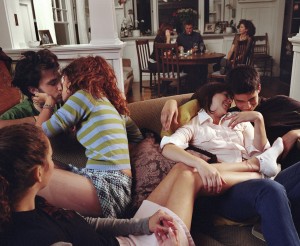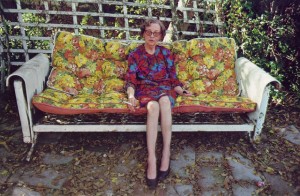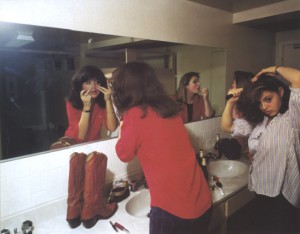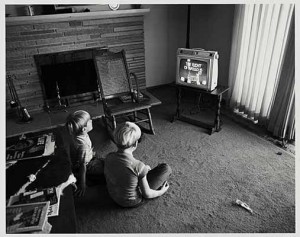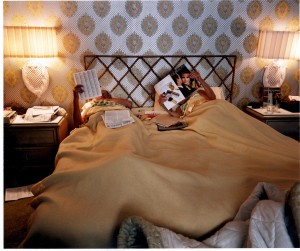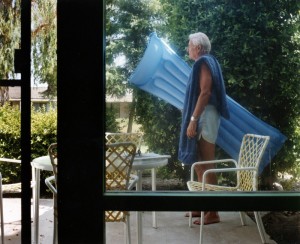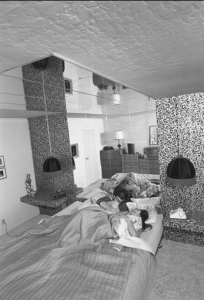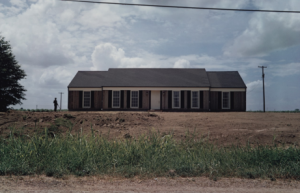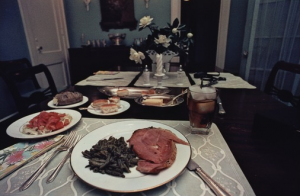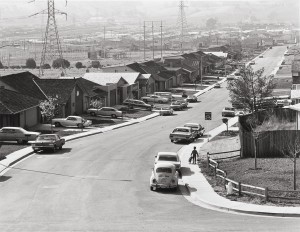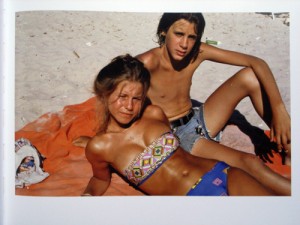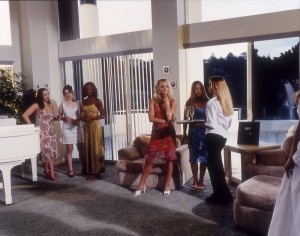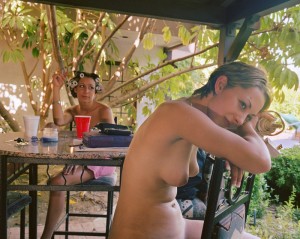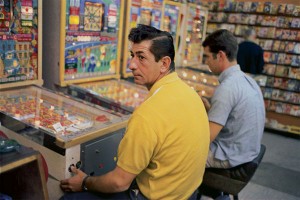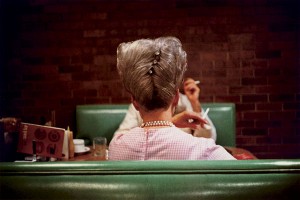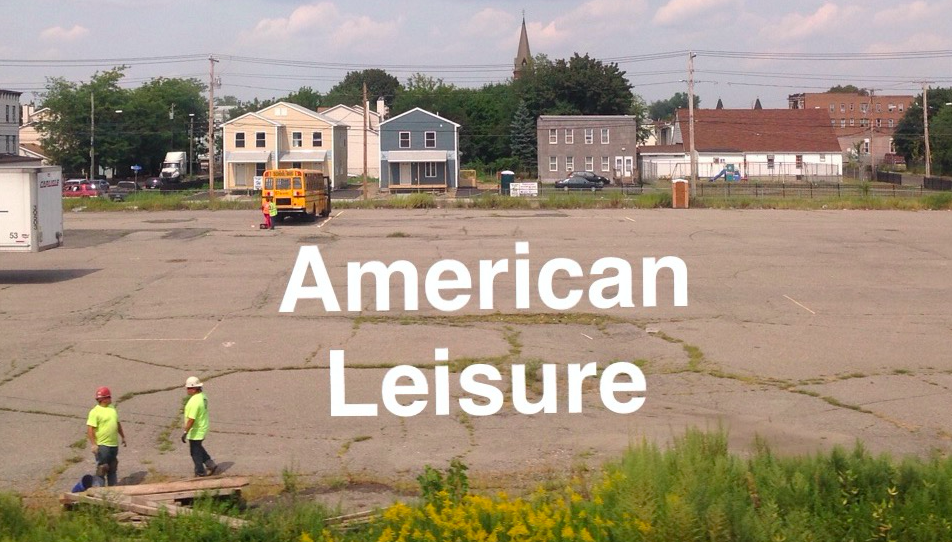
Joel Sternfeld, New Orleans, Louisiana, (#1), 1974
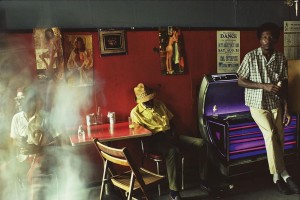
Larry Clark, Untitled, 1960
Tina Barney, The Flag, 1977
Tina Barney, Beverly, Jill, & Polly, 1982
Tina Barney, American Flag, 1988
Sally Mann, Sorry Game from Immediate Family, 1989
William Eggleston, Whitehaven, Mississippi, c. 1969-71
Diane Arbus, A Family on their Lawn one Sunday in Westchester, NY, 1968
Larry Sultan, Saturday Night, 2002
William Eggleston, Jackson, Mississippi, c. 1969-70
Sally Mann, Candy Cigarette, 1989
Bill Owens, I bought the Doughboy pool for David and the kids and now no one wants to take the responsibility for cleaning it., 1971
Bill Owens, Cocaine, 1980
Bill Owens, I don’t like the space walk. It’s Saturday morning and I want to see cartoons., 1972
Larry Sultan, Reading in Bed, 1988
Larry Sultan, Dad with Raft, 1987
Bill Owens, It’s a great pleasure to watch yourself make love in the six dozen mirrors that line the ceilings and walls. I’ve spent a tremendous amount of thought and planning to get the total effect of the bedroom., It’s fascinating to watch our friends’ reactions to seeing the luxury and sensuousness of the room. Our bedroom is the most enjoyable room in the house., 1972
William Eggleston, Tallahatchi County, Mississippi, July, 1970
William Eggleston, Sumner Mississippi, c. 1972
Tina Barney, Sunday New York Times, 1982
Bill Owens, Untitled, 1971
Joel Sternfeld, Ocean City, New Jersey, 1973
Larry Sultan, Mulholland Drive #3, 2001
Larry Sultan, Patio Drive, 2000
Larry Sultan, Topanga Skyline Drive #1, 1999
William Eggleston, Untitled, from Los Alamos, 1965-68 and 1972-74
William Eggleston, Untitled, from Los Alamos, 1965-68 and 1972-74
On Leisure in America
People who lived in America during the first half of the 20th century were forced to endure a time in which America faced severe states of conflict, such as World War I and World War II, along with grueling economic struggles, like the Great Depression. The effect of America’s involvement in World War I and World War II, as well as economic suffrage because of the Great Depression was one that resulted in Americans working tirelessly to support their families and themselves. When America recovered from the consequences born to World War I, World War II, and the Great Depression, the lives of Americans changed radically, as a feeling of relief was nationally experienced amongst Americans, thus provoking a sensation of leisure in America. The show I have curated, American Leisure, studies eight different photographers, and their works that concern the notion of leisure in America. American Leisure motivates the viewer’s exploration of leisure in America with reference to variables such as socioeconomic status, race, age, time, and place.
The photographers included in American Leisure consist of William Eggleston, Joel Sternfeld, Sally Mann, Larry Clark, Tina Barney, Larry Sultan, Diane Arbus, and Bill Owens. The eight photographers were selected on account of their ability to all capture the essence of Leisure in America, in distinct ways achieved through dissimilar photographic methods, and contrasting subject matter. The subjects of American Leisure satisfy a spectrum of unlike forms of leisure, which ranges from the elite class Tina Barney captures in her work, to the teenage drug addicts Larry Clark photographs in his work.
William Eggleston’s photographs generate narratives regarding leisure that are specific to the South during the 1960s and 1970s. In Eggleston’s Jackson, Mississippi, Eggleston captures an old woman sitting on a swing, smoking a cigarette, which renders a type of leisure specific to his subject. In Jackson, Mississippi Eggleston’s subject experiences a leisure that is uncomparable to the leisure that is acquired by the three teenagers recognized in Bill Owens’ Cocaine. Both Eggleston’s Jackson, Mississippi and Owens’ Cocaine capture subjects that experience leisure, but the leisure the old lady in Jackson, Mississippi is experiencing stems from her being alone, enjoying her her cigarette, whereas the leisure the teenagers in Owens’ Cocaine are experiencing, is one fueled by drugs.
The lack of commitment to clothes in the nude subjects of Larry Sultan’s Patio Drive and Topanga Skyline Drive #1, and Larry Clark’s Untitled, 1960, contribute to the viewer’s understanding that the subjects of both artists are at leisure. The drugs injected into the female figure’s arm in Larry Clark’s photograph recommends a less traditional conception of leisure, that is only accessible through the injection of drugs. Whereas the figures captured in Larry Sultan’s photograph are nude because of the requirements of their professions in working as porn stars, the nude teenagers noticed in Larry Clark’s photograph, are nude out of their own aspiration.
Tina Barney’s Sunday New York Times and William Eggleston’s Sumner Mississippi are both centered around a dining room table. The differences in dining room tables between the table in Tina Barney’s Sunday New York Times that is surrounded by people and the table on which food sits photographed in William Eggleston’s Sumner, Mississippi is essential to the viewer’s understanding of the different types of leisure implied by the photographs’ dissimilar conveyances. The notion of leisure in Tina Barney’s Sunday New York Times is unearthed in the assemblage of people’s hovering around the dining room table, casually reading the New York Times, and eating breakfast, all of whom seem to be in no rush. In contrast to Tina Barney, William Eggleston’s Sumner, Mississippi establishes a form of leisure through non-living subjects, the two plates with meals that sit on the table. The meals placed on the table in Eggleston’s Sumner, Mississippi birth a conception of leisure found in dining’s long-established relationship to leisure.
Joel Sternfeld’s New Orleans, Louisiana, (#1) and Tina Barney’s Beverly, Jill & Polly both incorporate a black person in the photographs the two artists capture. These moments are significant in that the number of black people photographed in the 1970s was significantly less than the number of white people photographed in the 1970s. Whereas the black woman in Tina Barney’s photograph is working for the family of the two white girls whom at leisure behind her, the black males Joel Sternfeld’s New Orleans, Louisiana, (#1) are seemingly at leisure in a bar. Joes Sternfeld’s photograph is particularly significant, as it addresses the notion of leisure for black people in America.
In the same way Bill Owens’ It’s a great pleasure to watch yourself make love in the six dozen mirrors that line the ceilings and walls. I’ve spent a tremendous amount of thought and planning to get the total effect of the bedroom., It’s fascinating to watch our friends’ reactions to seeing the luxury and sensuousness of the room. Our bedroom is the most enjoyable room in the house., captures a male and female in bed, so does Larry Sultan’s Reading in Bed. Whereas the subjects of Owens’ photograph are depicted post having had sex, the subjects of Larry Sultan’s Reading in Bed, are noticed reading, and not embracing each other as those are in Owens’ photograph. male and female are photographed laying in bed. The leisure experienced amongst those younger subjects in Owens’ work is that experienced through sex, whereas the leisure experienced amongst those in Sultan’s photograph is born to the knowledge both the Male and Female subjects have of each other’s presence, identical to the way leisure is experienced by the subjects photographed in Diane Arbus’ A Family on their Lawn one Sunday in Westchester, NY.
Although American Leisure naturally challenges its viewer to search for a universality in the various forms of leisure observed within the collection of photographs, variables such as socioeconomic status, race, age, time, and place determine the dissimilar types of leisure experienced. These variables are accountable for the viewer’s inability to discover a comprehensive commonality in the forms of leisures observed. Instead, the leisures born to the collection of photographs that comprise American Leisure transpire an engagement “with a form that has become so much more than just (an) image” (Texte Zur Kunst).
Works Cited
Halberstam, David. Bill Owens: Suburbia. 1999. Print.
“Larry Clark – GROUP OF 6 WORKS: SELECTED IMAGES…” Larry Clark – GROUP OF 6 WORKS: SELECTED IMAGES. Web. 03 Nov. 2015. <http://www.mutualart.com/Artwork/GROUP-OF-6-WORKS–SELECTED-IMAGES-FROM–/D1C35D85550A3A7F>.
“Larry Sultan | The Valley.” Larry Sultan | The Valley. Web. 03 Nov. 2015 <http://larrysultan.com/gallery/thevalley/>.
Mann, Sally, and Reynolds Price. Immediate Family. 1992. Print.
Owens, Bill, and Robert Harshorn. Shimshak. Leisure. New York, NY: Fotofolio, 2004. Print.
Sternfeld, Joel. Sternfeld: First Pictures. Göttingen / Paris: Steidl / Edition7L, 2011. Print.
Sussman, Elisabeth, Thomas Weski, and William Eggleston. William Eggleston: Democratic Camera, Photographs and Video, 1961-2008. New York: Whitney Museum of American Art, 2008. Print.
“Tina Barney.” Tina Barney. Web. 03 Nov. 2015. <http://www.tinabarney.com/#/theaterofmanners/>.
